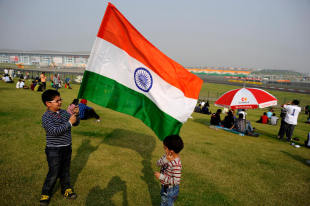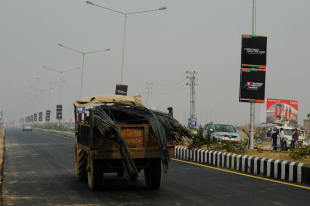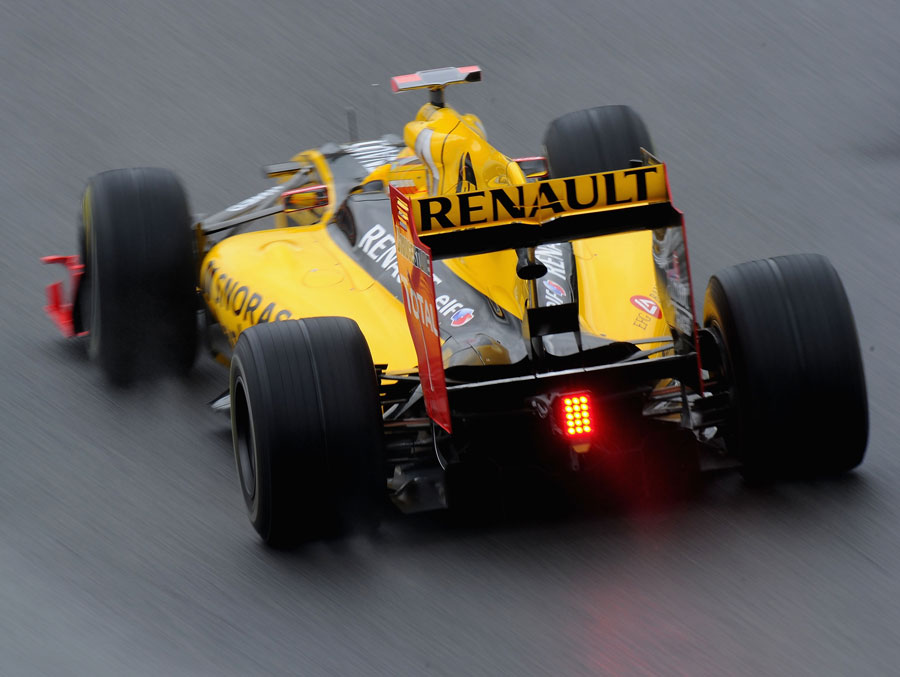
There was much excitement surrounding India's addition to the calendar in 2011, both from the Indian public and the Formula One paddock as anticipation grew heading to a new location. The result was a somewhat unfinished circuit, but one still prepared enough to host a race, and an enthusiastic crowd.
So, 12 months on, does that excitement still remain?
Arriving at Delhi airport, it's not long before you're alerted to the presence of the race. Paul di Resta and Nico Hulkenberg smile down on you from above baggage carousels, while non-F1 billboards point to India's passion for a motorsport as a whole.
Stepping off the same flight as Heikki Kovalainen, while talking to two South Africans (who were third-generation Indians who had never been to India before) about their first ever grand prix weekend, it feels like the race is on the minds of everyone around. But, quite quickly, that initial optimism disappears.
The taxi driver - himself appearing to stake a claim for a seat at the Young Driver Test as we tear through the centre of Delhi - is unaware of the race. When I eventually ask him if he knows about the grand prix and Formula One (a conversation I took a while to strike up, thinking it best he be left to concentrate on not quite hitting things as he desperately searches for my hotel) he just responds with a blank look.
At my accommodation for the week, the owner on the phone is more enthusiastic. When I ask for a taxi for the following morning, there's no need to name the destination; "to the Buddh International Circuit, yes?" he immediately responds. Unfortunately, the next taxi driver is also unaware of the race, and of the circuit's existence. Google Maps is required once again to point out where I want to go and how to get there from the centre of Greater Noida.
Though it feels odd to be all geared up for a race few locals appear to know about, the real contrast comes en-route to the circuit. Having negotiated the roads teeming with auto-rickshaws, bicycles and wandering families, the taxi peels off on to the Yamuna Expressway; a vast, empty highway towards the circuit (and much further beyond, admittedly). It's an uneasy feeling as the circuit looms in to view through the haze, looking every bit the Tilke-drome you'd expect.

Where there was dusty, uneven land there's suddenly lush grass, grand sculptures and gushing water greeting you. A full day at a circuit with all the modern facilities leads you to forget where in the world you are, until you get back in the media shuttle to leave and rejoin the chaos.
Friday morning sees very few spectators at the circuit, leaving the Formula One world to get on with work as normal while most of India rumbles past oblivious outside. Only it doesn't rumble past, because outside there's only a toll road most Indians aren't licensed to use.
Saturday is similarly quiet, and any hopes that race day will dramatically change matters are quashed as we join the Expressway on Sunday morning. Another free run in, and - bar a few blue directional signs on a main road through Greater Noida - it's only along the side of the motorway that the race is advertised.
The pit lane pre-race is as busy as usual, and the stands do slowly fill up as lights-out approaches. The main grandstand and turn three are mostly full, but at turn one there are barely any spectators, similarly at turn four. It's a good atmosphere and the official figures are 65,000, which means Bernie isn't worried: "No, I mean first races are always high and the second year goes down. If in the third year it isn't going up then it's something to worry about.
"We have a competitor here … what's the name of that game? Cricket. That's it."
However, the contrast between inside the circuit and outside the circuit gates remains a concern. While it must be noted that the race is not a government priority, it is a place where the haves come for a day of leisure; speeding through, around and past the have-nots en-route. In my whole time in India, I met three people going to the race - the two South Africans I flew in with and the owner of my first hotel - and the only other person I spoke to who knew about the race was the second hotel owner.
It's a much smaller percentage of the 1.3 billion population that the sport is appealing to, but after the initial drive in 2011 the first year fever seems to have faded. Whether it will grow from here remains to be seen.
Chris Medland is assistant editor at ESPNF1
© ESPN Sports Media Ltd.
 Chris Medland is assistant editor at ESPNF1 Chris Medland, who in his youth even found the Pacific GPs entertaining, talked his way in to work at the British Grand Prix and was somehow retained for three years. He also worked on the BBC's F1 output prior to becoming assistant editor ahead of the 2011 season
Chris Medland is assistant editor at ESPNF1 Chris Medland, who in his youth even found the Pacific GPs entertaining, talked his way in to work at the British Grand Prix and was somehow retained for three years. He also worked on the BBC's F1 output prior to becoming assistant editor ahead of the 2011 season

